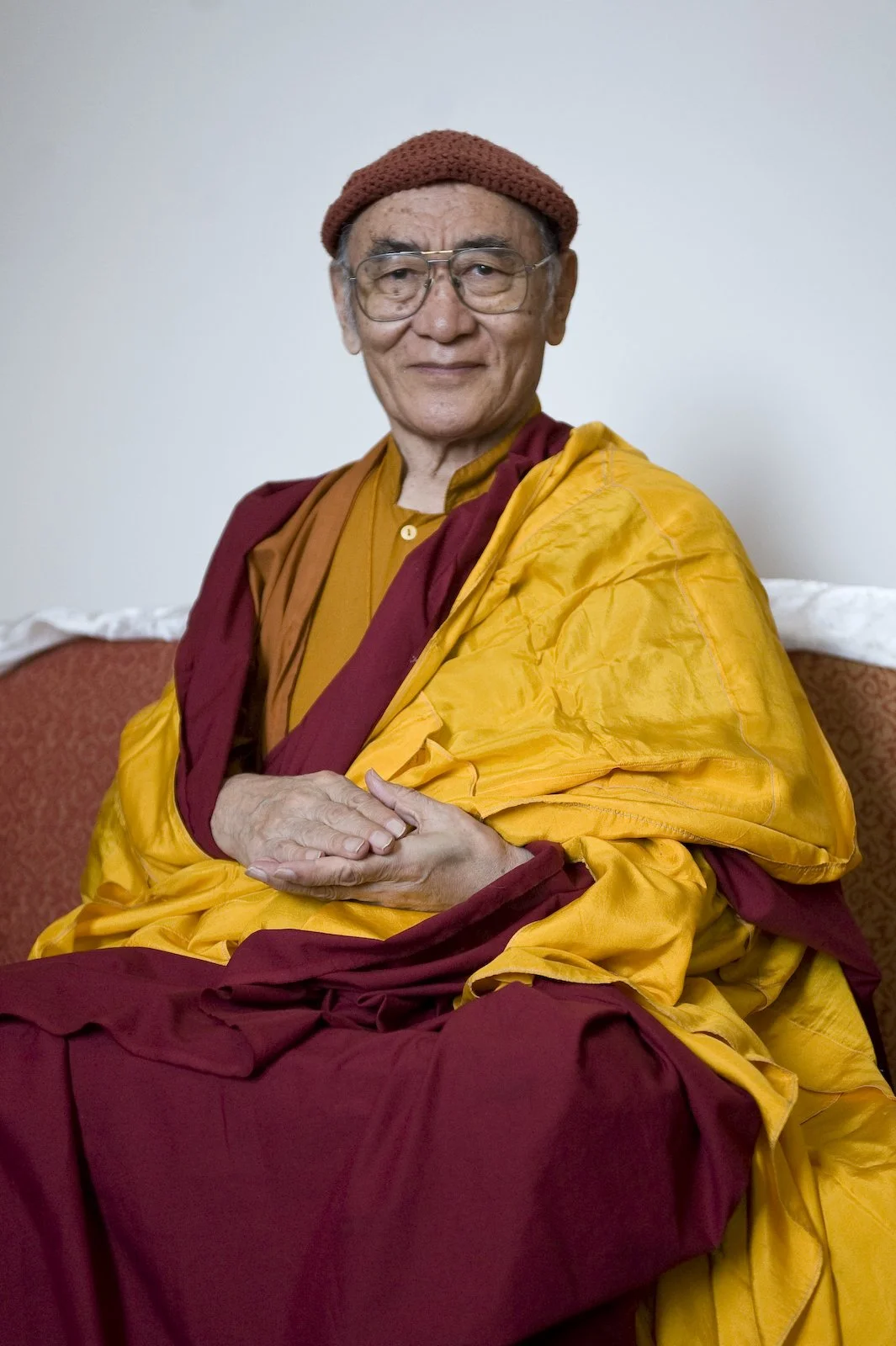The Sakya Tradition
The Sakya tradition is known as the ‘holder of all the Buddha’s teachings’ due to the vast extent of teachings and practices it has preserved in its long history.
The tradition takes its name from the monastery founded at Sakya in south-western Tibet in 1073 by Könchok Gyalpo of the Khön clan. Since his time the leadership of the tradition has remained within the same family.
Könchok Gyalpo was followed by his son, Sachen Kunga Nyingpo, the first of the five ‘gongmas’ (venerable masters), who in turn was succeeded by Sonam Tsemo, Drakpa Gyaltsen, Sakya Pandita and Chogyal Phakpa, teacher of Kublai Khan.
These five founding lamas gave the tradition its distinctive shape, Sakya Pandita being particularly renowned throughout Tibet and beyond for the depth of his knowledge and mastery of all the teachings. He was also instrumental in preserving the efficacy of the dharma by clarifying the misunderstandings which arose during the early history of Buddhism in Tibet. The current Sakya Trizin is directly descended from these ‘gongmas’.
The most important of the tantric transmissions that the Sakya school has preserved is the Hevajra Tantra with its associated instructions known as the Path and its Fruit, which had been developed by the 9th century Indian yogin, Virupa. Other key transmissions that form part of the Sakya teachings include the cycles of Vajrayogini, Vajrakilaya, Mahakala and Guhyasamaja.
Over the centuries numerous men and women have achieved great realisation through the study and practice of the teachings preserved within the Sakya tradition.
Today’s Sakya Masters
His Holiness Sakya Gongma Trichen, the 41st Sakya Trizin
His Holiness Kyabgon Gongma Trichen Rinpoche (Sakya Trichen) served as the 41st head of the Sakya Order of Tibetan Buddhism until March 2017, when the throneholder duties were handed over to his eldest son, His Holiness Ratna Vajra Rinpoche, the 42nd Sakya Trizin. In March 2022 His Holiness’ younger son, Gyana Vajra Rinpoche was enthroned as the 43rd Sakya Trizin.
His Holiness Ratna Vajra Rinpoche, the 42nd Sakya Trizin
Khöndung Ratna Vajra Rinpoche is one of the most important lineage holders of the Khön family lineage and served as the 42nd throneholder of the Sakya school from 2017-2022.
Kyabgon Gongma Trizin Rinpoche was born in Dehra Dun, India as the eldest son of Kyabgon Gongma Trichen Rinpoche and a member of Tibet’s noble Khön family who founded the Sakya school in the eleventh and twelfth centuries. Since early childhood he has undertaken the intensive traditional training for lineage holders. He is well known for the brilliance and clarity of his teachings and his fluency and excellent command of English.
On the 9th of March 2017, Ratna Vajra Rinpoche was enthroned as the 42nd Sakya Trizin. In March 2022 that position was passed on to his brother Khöndung Gyana Vajra Rinpoche.
His Holiness Gyana Vajra Rinpoche, the 43rd Sakya Trizin
Khöndung Gyana Vajra Rinpoche is a senior lineage holder of the Sakya school, and the younger son of Kyabgon Gongma Trichen Rinpoche. He received decades of rigorous training from His Holiness himself, as well as many other lamas such as Chogye Trichen Rinpoche, Luding Khenchen Rinpoche, Khenpo Appey Rinpoche, and the late Khenpo Migmar Tsering.
Gyana Vajra Rinpoche completed his monastic ritual training at Sakya Centre and his philosophical training at Sakya College.
On 16 March 2022 he was enthroned as the 43rd Sakya Trizin.
Karma Thinley Rinpoche
Karma Thinley Rinpoche is a Buddhist master of the Sakya and Kagyu traditions and was born into the noble family of Bongsar in 1931 in the Nangchen area of Kham, Eastern Tibet.
With an emphasis on transmitting the authentic Buddhist teachings, we support the practice of this extraordinary tradition by modern day men and women.
Learn more about the Buddhist tradition and how it can be practiced.




